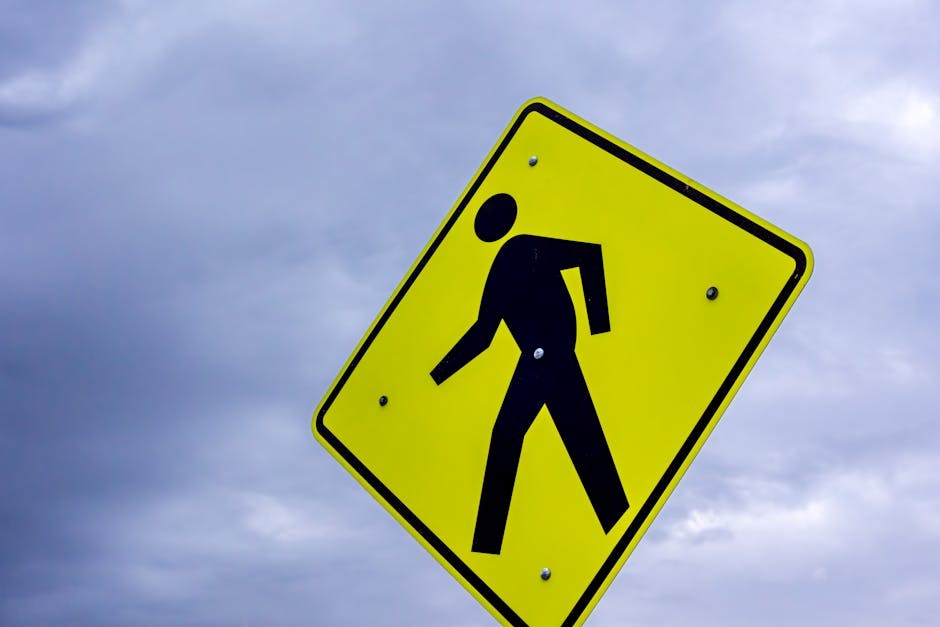
An angle guide whetstone is a must-have tool for maintaining precise sharpening angles, ensuring consistency and razor-sharp edges for knives of all types.
1.1 Importance of Angle Precision in Knife Sharpening
Precision in sharpening angles is crucial for achieving a razor-sharp edge. Incorrect angles can lead to a dull knife or uneven edge, reducing performance. Using the correct angle ensures consistent results, maintains the knife’s integrity, and extends its lifespan. Proper angle control also enhances safety, making the sharpening process more efficient and effective for both beginners and professionals.
1.2 Overview of Whetstone and Angle Guide Basics
A whetstone is a sharpening tool used to hone knife edges, available in various grits for coarse to fine sharpening. An angle guide is a complementary tool that helps maintain the correct sharpening angle, ensuring precise and consistent results. Together, they simplify the sharpening process, making it accessible for both professionals and beginners to achieve razor-sharp edges efficiently.
Purpose of an Angle Guide in Whetstone Sharpening
The angle guide ensures precision and consistency during sharpening, helping users maintain the correct angle and reducing mistakes, especially for beginners, to achieve sharp, even edges.
2.1 Maintaining Consistent Sharpening Angles
Maintaining consistent sharpening angles is crucial for achieving a sharp, even edge. An angle guide ensures the knife stays at the correct angle, preventing uneven wear and improving results. This tool is especially helpful for beginners, as it eliminates guesswork and allows for precise control during the sharpening process, leading to consistent outcomes every time. Consistency enhances the knife’s performance and longevity.
2.2 Reducing the Learning Curve for Beginners
An angle guide simplifies the sharpening process, making it accessible for newcomers. By providing clear angle references, it eliminates guesswork, allowing beginners to focus on technique. This tool ensures consistent results, builds confidence, and accelerates skill development. Many guides come with instructional materials, further easing the learning process and helping users master knife sharpening efficiently. It’s an essential aid for those new to maintaining sharp edges.
Choosing the Right Angle for Your Knife
Selecting the correct angle ensures optimal sharpening results. Common angles like 15°, 20°, and 25° suit different knives, with 15° ideal for precise cuts and 25° for durability.
3.1 Common Knife Angles (15°, 20°, 25°)
Common knife angles include 15°, 20°, and 25°, each suited for specific tasks. A 15° angle is ideal for precise, sharp edges, often used for Japanese knives. The 20° angle is versatile, suitable for most kitchen and utility knives, while the 25° angle is best for thicker blades, ensuring durability and resistance to wear;
Using an angle guide ensures these angles are maintained consistently, making sharpening easier and more effective for beginners and professionals alike.
3.2 Angle Selection Based on Knife Type
The angle chosen depends on the knife’s type and intended use. Japanese knives often use a 15° angle for precise cuts, while chef knives may use 20° for versatility. Pocket knives typically sharpen at 25°, and cleavers might require a steeper angle, around 30°, for durability. Using an angle guide ensures these angles are maintained consistently, making sharpening easier and more effective for various blade types.

Types of Angle Guides for Whetstone Sharpening
Angle guides come in adjustable, fixed, and stackable designs, offering versatility for maintaining precise sharpening angles and accommodating various knife types and sharpening preferences effectively.
4.1 Adjustable Angle Guides
Adjustable angle guides offer flexibility, allowing users to customize sharpening angles from 10° to 20°, ideal for versatile use with different knife types. Their compact designs enable precise control, making them suitable for both beginners and professionals. Easy to use, these guides ensure consistent results, enhancing the sharpening experience by adapting to various knife edge requirements efficiently.
4.2 Fixed Angle Guides
Fixed angle guides provide predetermined sharpening angles, such as 15°, 20°, or 25°, ensuring simplicity and consistency. These guides are perfect for users who prefer specific angles for knife types, like Japanese knives requiring 15°. They eliminate the need for angle adjustments, offering a straightforward sharpening process that guarantees precise results every time, ideal for maintaining edge geometry effectively.
4.3 Stackable Angle Guide Sets
Stackable angle guide sets offer versatility by allowing users to combine multiple guides to achieve various angles. With increments from 10° to 20°, these sets provide flexibility for different knife types. They are ideal for both beginners and professionals seeking precise control. The modular design ensures adaptability, making them a valuable addition to any sharpening toolkit, enhancing accuracy and efficiency in achieving desired edge angles.

How to Use an Angle Guide with a Whetstone
Position the angle guide on the whetstone, align the knife, and apply consistent pressure. This method ensures precise sharpening, maintaining the correct angle for a razor-sharp edge.
5.1 Positioning the Angle Guide on the Whetstone
Place the angle guide at one end of the whetstone, ensuring it is securely aligned with the stone’s surface. This setup allows the knife to glide smoothly along the guide, maintaining the desired angle throughout the sharpening process. Proper positioning ensures consistency and accuracy, making the sharpening process more efficient and effective for achieving a sharp edge.
5.2 Aligning the Knife for Sharpening
Hold the knife at the desired angle and align its heel with the edge of the angle guide. Gently place the blade on the whetstone, ensuring the bevel matches the guide’s angle. Maintain light pressure and start sharpening in smooth, consistent strokes. This alignment ensures even wear and a precise edge. For beginners, starting with a visible mark on the blade can help track progress and confirm proper alignment.
5.3 Applying Consistent Pressure
Apply steady, moderate pressure while sharpening to ensure even wear on the blade. Excessive pressure can damage the knife or whetstone, while too little may ineffective. Use the angle guide to maintain uniform force, gliding the knife across the stone in smooth, controlled strokes. This consistent pressure ensures a sharp, polished edge. Lighter pressure is often sufficient for finer grit stones, while coarser grits may require slightly more force for efficient sharpening.

Benefits of Using an Angle Guide
An angle guide ensures precision, consistency, and efficiency in sharpening, helping achieve the perfect edge while minimizing mistakes and saving time, especially for beginners.
6.1 Precision and Consistency
An angle guide ensures precision by maintaining the correct sharpening angle, leading to consistent results. Tools like the Work Sharp Benchtop Whetstone Kit and Fiskars Premium Whetstone Set include angle guides that simplify the sharpening process. These guides help achieve uniform edges, which is essential for both beginners and experienced users. The precision and consistency they offer lead to a razor-sharp finish every time, enhancing the overall effectiveness of knife maintenance.
6.2 Time Efficiency
Using an angle guide significantly speeds up the sharpening process by eliminating trial and error. Tools like the Work Sharp Benchtop Whetstone Kit and Blade Revivals Whetstone Kit include angle guides that streamline sharpening. These guides help maintain the optimal angle, reducing the time spent adjusting and repositioning the knife. This efficiency makes sharpening faster and more straightforward, especially for beginners, allowing for quick and effective results.
6.4 Reduced Risk of Mistakes
Angle guides minimize errors by keeping the knife at the correct sharpening angle, preventing uneven edges and over-sharpening. Tools like Fiskars Premium Whetstone Set and Blade Revivals Kits include guides that help maintain consistency. This reduces the risk of damaging the knife, making the process safer and more reliable for both beginners and professionals. Consistent results are achieved with minimal risk of mistakes.

Popular Angle Guide and Whetstone Kits
Popular kits include Work Sharp Benchtop, Fiskars Premium, and Blade Revivals, offering high-quality whetstones with adjustable or fixed angle guides for precise knife sharpening.
7.1 Work Sharp Benchtop Whetstone Kit
The Work Sharp Benchtop Whetstone Kit is a premium sharpening system designed for precision and ease. It includes a dual-grit (1000/6000) whetstone, an adjustable angle guide, a leather strop, and a flattening stone. The kit also features a sturdy wooden base for stability. Ideal for both beginners and professionals, it accommodates various knife types and edge tools, ensuring razor-sharp results with minimal effort. A comprehensive solution for all sharpening needs.
7.2 Fiskars Premium Whetstone Set
The Fiskars Premium Whetstone Set is a high-quality sharpening system featuring a stone block with 1000/5000 grit surfaces. It includes an easy-to-use angle guide, ensuring precise sharpening angles for knives. The set also comes with a convenient storage case, making it portable and organized. Designed for both beginners and professionals, it offers exceptional control and consistency, helping to achieve razor-sharp edges effortlessly. A reliable choice for maintaining knife sharpness;
7.3 Blade Revivals Whetstone Kit
The Blade Revivals Whetstone Kit is a comprehensive sharpening system designed for precision and ease. It includes a 400/1000 and 3000/8000 grit whetstone, two flattening stones, and a non-slip bamboo base for stability. The kit also features a knife sharpening angle guide, ensuring consistent results. Suitable for both beginners and professionals, it offers a complete solution for achieving razor-sharp edges. Its durable construction and versatile design make it a popular choice among knife enthusiasts.

Tips for Maintaining the Correct Angle
Always reference the angle guide during sharpening to ensure consistency. Regularly check and adjust the knife’s position to maintain the desired angle for optimal results.
8.1 Using the Angle Guide Effectively
Position the angle guide at the stone’s edge, aligning it with your knife’s spine. Slide the guide along the stone as needed, ensuring the blade maintains the correct angle; This tool helps prevent mistakes and speeds up the sharpening process, especially for beginners. Regular use enhances precision and consistency, making knife sharpening more efficient and effective overall.
8.2 Monitoring the Knife’s Edge
Regularly inspect the knife’s edge during sharpening to ensure accuracy. Check for consistent sharpness and angle alignment, preventing over-sharpening. This careful monitoring enhances precision, helping users avoid mistakes and achieve a perfectly sharp edge with minimal effort.
Comparison with Other Sharpening Tools
Angle guide whetstones offer precision and control, unlike honing rods or electric sharpeners, making them ideal for both beginners and professionals seeking consistent results.
9.1 Angle Guide vs. Honing Rod
An angle guide ensures precise sharpening angles, ideal for beginners, while a honing rod maintains edges but requires skill to match the correct angle. Unlike honing rods, angle guides work with whetstones for consistent results, making them superior for achieving razor-sharp edges effortlessly.
9.2 Angle Guide vs. Electric Sharpeners
An angle guide offers precision and control for manual sharpening, ideal for achieving exact angles, while electric sharpeners provide speed and convenience. Unlike electric sharpeners, angle guides work with whetstones, allowing for customizable sharpening. They are portable, cost-effective, and suit those who value precision. Electric sharpeners, however, are better for quick touch-ups and ease of use, making them a practical choice for everyday maintenance without the need for manual skill.

Advanced Techniques with an Angle Guide
Explore advanced sharpening methods using an angle guide, such as refining edges on various blade types or achieving razor-sharp finishes with precise angle control techniques.
10.1 Sharpening Different Blade Types
An angle guide is essential for sharpening various blade types, ensuring the correct angle for each. Pocket knives typically use 20°, while chef knives prefer 25°. Japanese knives often require a finer 15° edge. The guide helps maintain consistency, preventing over-sharpening. By adjusting the angle guide, you can tailor sharpening sessions to match the specific needs of different blades, ensuring precise results every time.
10.2 Achieving a Razor-Sharp Edge
Achieving a razor-sharp edge requires precision and control, which an angle guide provides. By maintaining consistent angles and using light, even strokes, you ensure uniform sharpening. This method prevents over-sharpening and produces a finely honed blade. The guide’s precision helps in creating a sharp, durable edge, making it ideal for both beginners and professionals aiming for optimal results with their whetstone sharpening process.

Customer Reviews and Feedback
Customers praise the angle guide whetstone for its effectiveness and ease of use, particularly for maintaining consistent sharpening angles. Many appreciate its ability to achieve precise results, making it a valuable tool for both beginners and professionals.
11.1 Beginner Experiences
Beginners often praise the angle guide whetstone for its simplicity and effectiveness. It provides confidence and ensures consistent results, making knife sharpening less intimidating. Many first-time users highlight how the guide helps maintain the correct angle, eliminating guesswork and allowing them to focus on technique. The tool’s ease of use and ability to deliver precise sharpening have made it a favorite among those new to knife sharpening.
11.2 Professional Opinions
Professionals highly recommend angle guide whetstones for their precision and reliability. Many experts emphasize how these tools ensure consistent results, making them indispensable for maintaining high-quality knife edges. They praise the guide’s ability to simplify the sharpening process while delivering professional-level sharpness. For experienced users, the angle guide enhances efficiency and accuracy, solidifying its place as a essential tool in their sharpening arsenal.
Care and Maintenance of the Angle Guide
Clean the angle guide with a soft cloth and mild soap. Store it in a dry place to prevent rust or damage, ensuring longevity and optimal performance.
12.1 Cleaning the Angle Guide
Cleaning the angle guide is essential for maintaining its accuracy. Use a soft cloth and mild soap to wipe away debris and metal particles. Avoid harsh chemicals or abrasive materials that could damage the surface. Dry thoroughly with a clean towel to prevent rust or corrosion. Regular cleaning ensures the guide remains precise and functions smoothly during sharpening sessions.
12.2 Storing the Angle Guide
To maintain the angle guide’s quality, store it in a dry, cool place away from direct sunlight. Use a protective case or pouch to prevent scratches and damage. Avoid storing it near sharp objects or heavy tools that could cause accidental harm. Keep it separate from other accessories to ensure longevity and maintain its precision for future sharpening tasks.

Common Mistakes to Avoid
- Applying excessive pressure, which can damage the blade or whetstone.
- Not regularly inspecting the knife’s edge for progress.
13.1 Incorrect Angle Placement
Incorrect angle placement is a common mistake that can lead to uneven sharpening and a poorly sharpened edge. This often occurs when the knife is not aligned properly with the guide, causing inconsistent pressure. To avoid this, ensure the angle guide is securely positioned on the whetstone and align the knife precisely. Regularly checking the angle during sharpening helps maintain consistency and prevents mistakes. Using a guide with predefined angles can also minimize errors and improve results.
13.2 Insufficient Pressure
Insufficient pressure while sharpening can result in a dull or uneven edge. Applying too little pressure fails to effectively remove metal, leading to poor sharpness. Conversely, excessive pressure can damage the knife or whetstone. To avoid this, maintain steady, moderate pressure throughout the sharpening process. Using an angle guide helps distribute pressure evenly, ensuring a sharp and consistent edge. Always monitor the pressure to achieve optimal results.
The angle guide whetstone is an essential tool for precise knife sharpening, ensuring consistency and razor-sharp edges. Perfect for both pros and beginners, it enhances sharpening efficiency and results.
14.1 Final Thoughts on Angle Guide Whetstone
The angle guide whetstone is a versatile and indispensable tool for achieving precise knife sharpening; It ensures consistency, efficiency, and razor-sharp results, making it ideal for both beginners and professionals. By maintaining the perfect angle, it elevates sharpening skills and guarantees reliable outcomes. Whether for everyday use or professional tasks, this tool is a game-changer in knife maintenance, delivering unmatched precision and satisfaction.
14.2 Encouragement to Practice
Mastery of the angle guide whetstone requires patience and consistent practice. Regular sharpening sessions will improve your skills and confidence; Embrace the process of refining your technique, as each session brings you closer to achieving razor-sharp edges. The satisfaction of maintaining your knives’ precision is rewarding. Keep sharpening, and you’ll soon see noticeable progress in your ability to use the angle guide effectively and efficiently.

Additional Resources
For further learning, explore recommended products like Work Sharp and Fiskars kits. Check out online tutorials for visual guidance. Consider angle guide tools for precise sharpening.
15.1 Recommended Tutorials
Explore video tutorials on platforms like YouTube for step-by-step guides on using angle guides effectively. Many manufacturers, such as Work Sharp and Fiskars, offer detailed instructional videos. Additionally, sharpening communities and forums often share tips and tricks for mastering the angle guide technique. These resources provide visual and practical insights to enhance your sharpening skills and ensure optimal results with your whetstone.
15.2 Suggested Products
Consider products like the Work Sharp Benchtop Whetstone Kit, Fiskars Premium Whetstone Set, or Blade Revivals Whetstone Kit for their high-quality angle guides and comprehensive sharpening systems. These kits often include multiple grit stones, angle guides, and storage cases, offering versatility for both beginners and professionals. They are designed to simplify the sharpening process and ensure precise results, making them excellent choices for anyone looking to enhance their knife-sharpening experience.